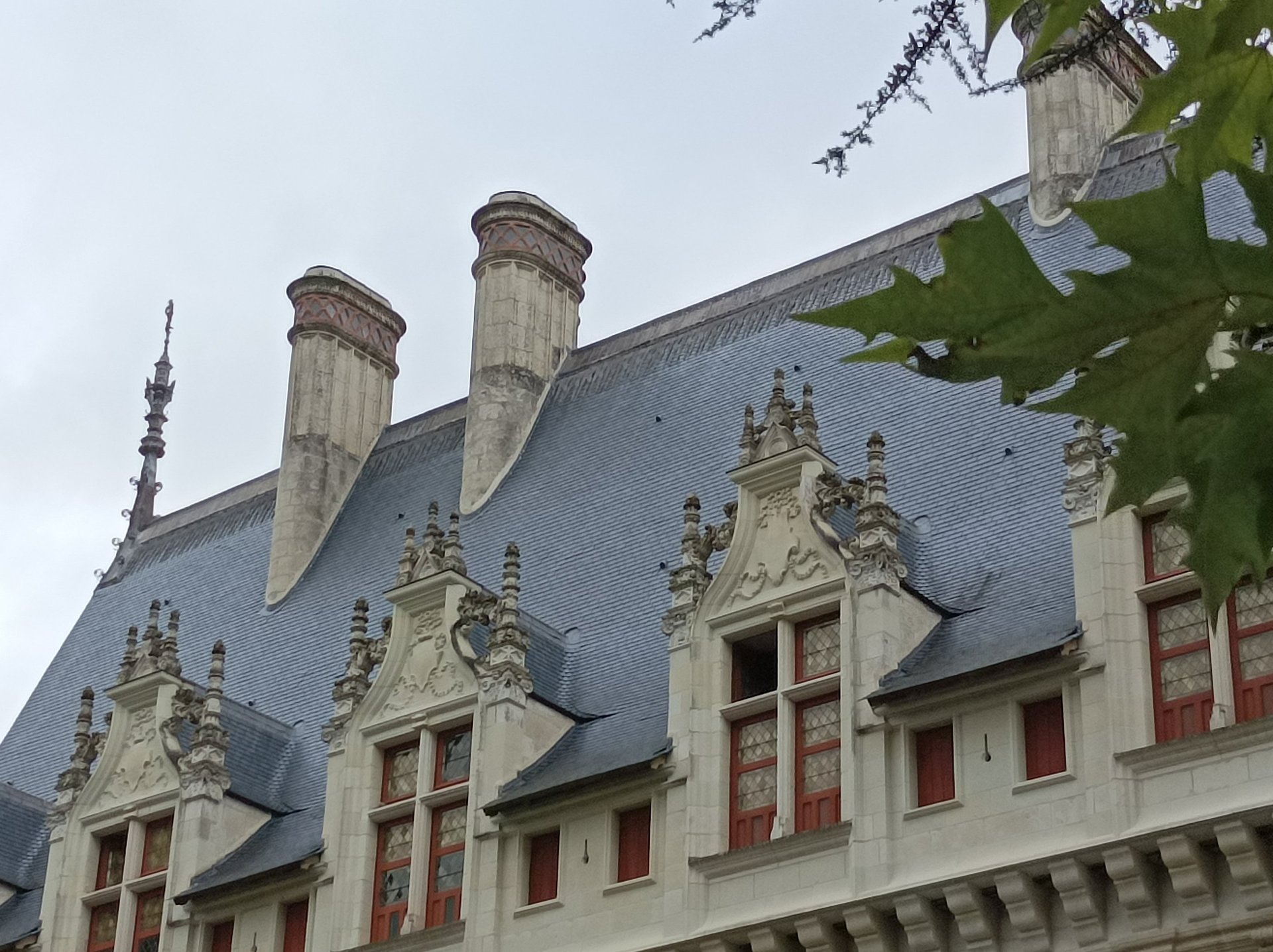
From Caves to Chateaux
A visit to the Indre et Loire.
BUILDINGS AND ARCHITECTURE TRAVEL THROUGH FRANCE
Joan
10/19/20235 min read
A large family reunion has brought me to the valley of the Indre, a tributary of the River Loire. Although much smaller than the Loire , it is a beautiful river, graced by poplar trees and willows, with lots of tiny islands, bridges, leats and water mills. Of course this region is best known for its chateaux , and wherever we go, these impressive, graceful buildings are never far away. The gîte where we are staying has been fashioned from the stables of a small early seventeenth century chateau, Le Manoir des Vonnes, which is featured in a story by Balzac. We were invited to look around this historic monument by our host Eric. Each room has an enormous chimney breast with elaborate stone carvings, created by specially imported Italian artisans . Amongst the various carvings of coats of arms, flowers, birds and acanthus leaves is a fascinating Green Man, originally a Celtic pagan fertility god, later adopted in both France and England as a Christian symbol of birth , life and death. A stone spiral staircase winds downstairs, where I could imagine kitchen staff working in largely windowless vaulted rooms. Eric showed us a picture from the 19C when many of the windows were bricked up in order to avoid the window tax. At that time it became a farm .Happily the manor has since been restored to its former glory.
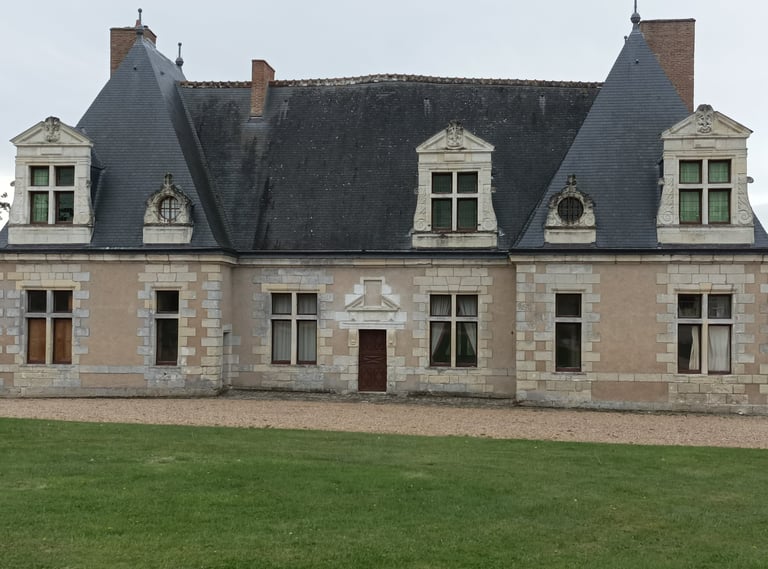



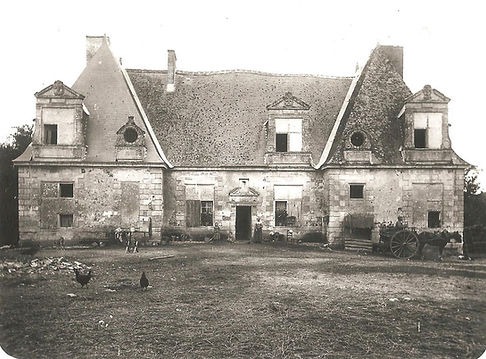

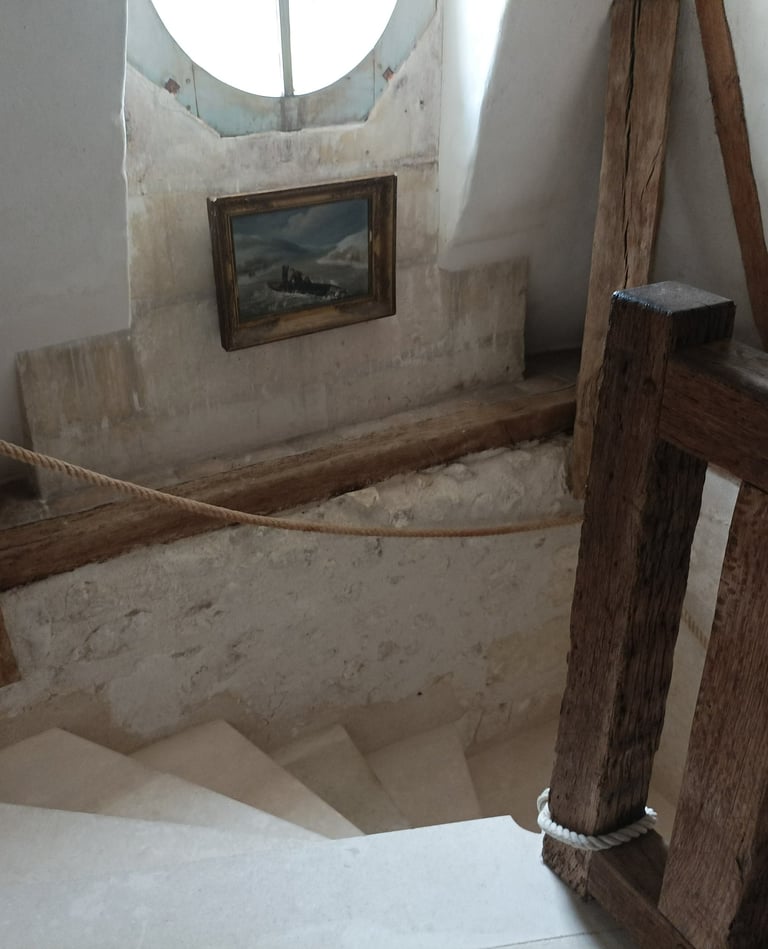

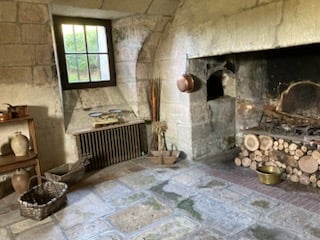


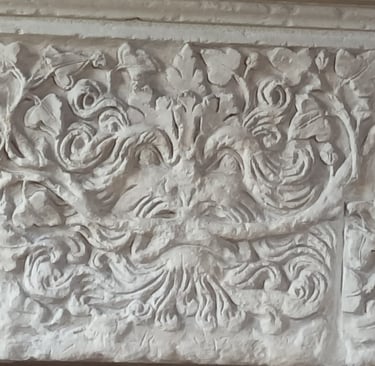
There are over 300 chateaux in the Loire area, built mostly between the fifteenth and seventeenth centuries in grand Italianate style at a time when Royals sought to live in this area, and their courtiers followed. Of course France operated a feudal system, by which the peasants supported this through their tithes. Many chateaux were destroyed or ransacked during the French revolution of 1789, when not only the king and his wife Marie Antoinette were killed, but nobles and courtiers too. Of the chateaux that remain today, most are privately owned, and many are operated as tourist venues or hotels. We chose to visit the park at nearby Azay le Rideau, where the chateau was built on an island in the middle of the Indre, and where the foundations seem to rise out of the water. It is a magnificent sight. The surroundings were landscaped in the 19C, and many trees were planted which now tower above us. These gardens are more natural, unlike the formal gardens of other chateaux.
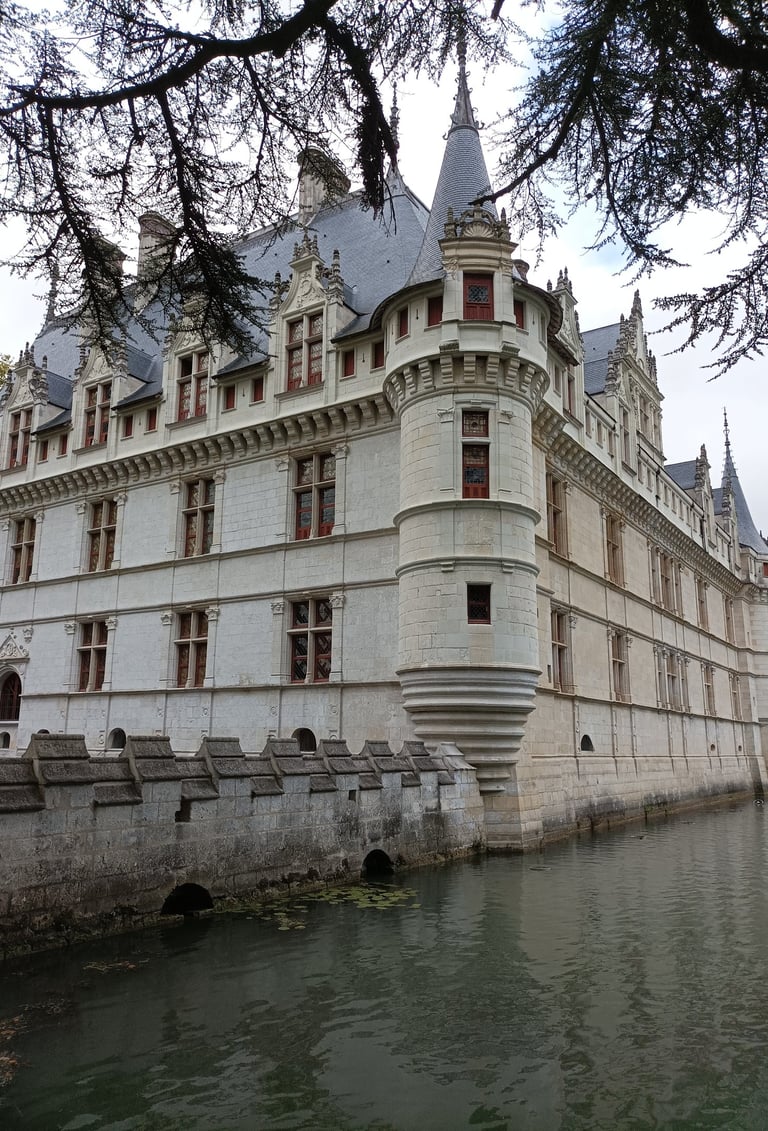

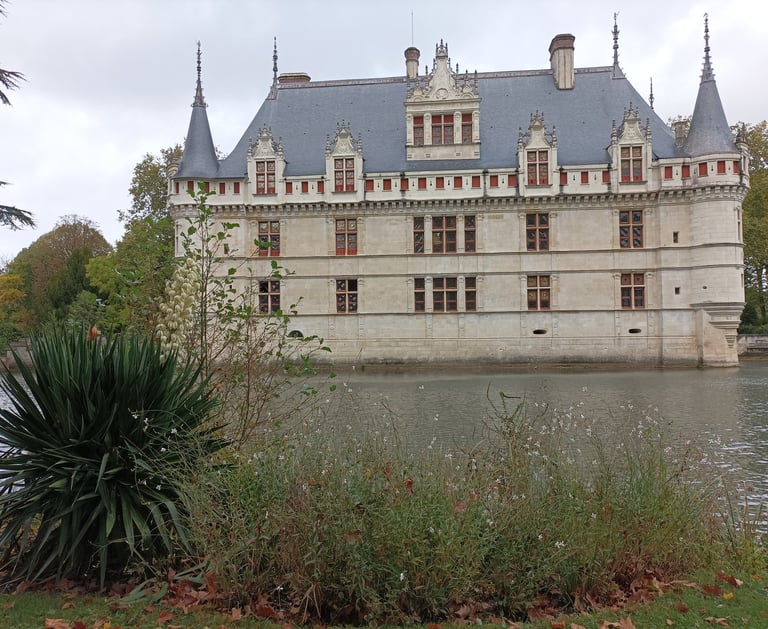


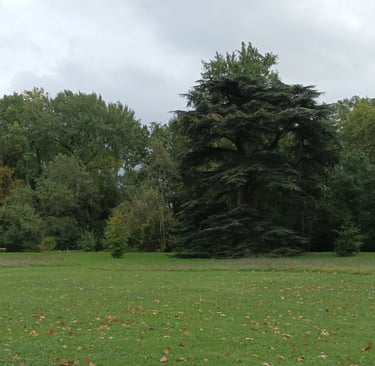

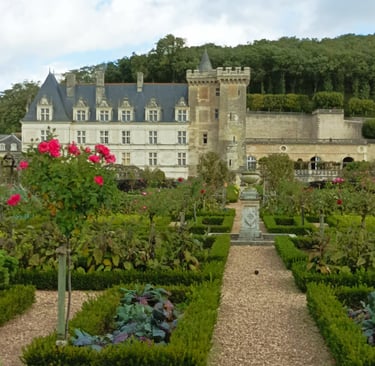
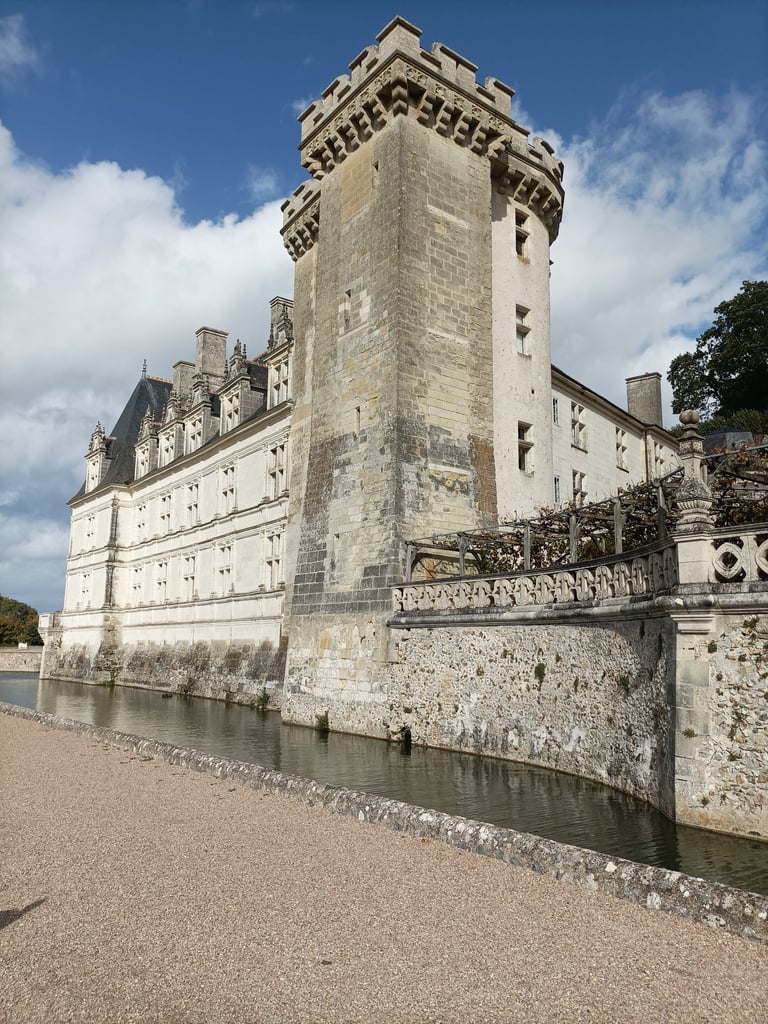

On the advice of of my hostess Florence, yesterday I visited the Chateau of Villandry. This is an imposing building , set in a charming medieval village on the banks of the River Cher. I bought a ticket specifically to look at its enormous range of ornamental gardens, with its formal plantations, stone balustrades, and fountains. The afternoon became cloudy and the crowds vanished, so I was able to wander around largely on my own, enjoying the feeling of being a member of the French nobility, passing my idle day in the private tranquillity of these beautiful surroundings.
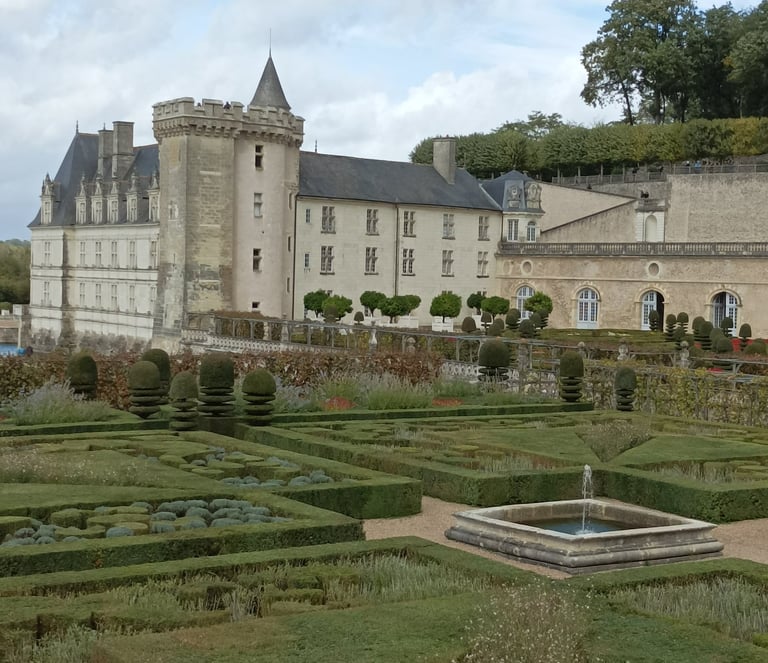

As well as roses, pansies and begonias, I was surprised to see more unusual plantings such as celery , fennel, and colourful ornamental cabbage. These gardens are certainly very impressive. However I felt concerned about the large amount of box hedging. What will happen to it when the pyrales(or box moth) arrive? Florence assured me that measures are being undertaken to replace these with a more resistant variety. Having seen the devastation to boxwood in Hérault, I can only hope that these measures work.
Villandry
Another fine chateau that lies on the banks of the River Cher, a tributary of the Loire, is Chenonceau. We happened upon it once, decades ago, when we were camping nearby. As we cycled along the river banks we caught sight of it and were so overwhelmed by its size and beauty that we just had to explore. I suppose it is inevitable that we must brave tourist crowds nowadays if we wish to visit these monuments, as renovations and maintenance must be very costly. But discovering this chateau by accident, when visitors were fewer, somehow makes the memory very special.

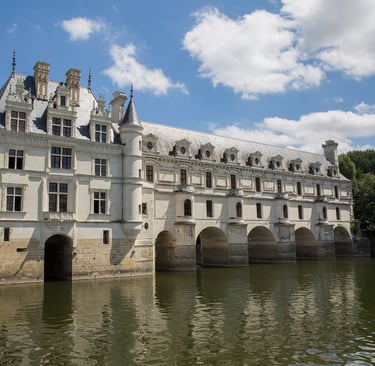
The sheer number and extravagance of these fine buildings reveals the huge gap that must have existed between the rich and the poor. How could France have supported so many wealthy 'nobles'? Where did they acquire their enormous wealth? No wonder trouble was brewing. Look closely as you travel between the chateaux and you will notice small cave like dwellings in the limestone cliffs. During the middle ages, most of the churches and chateaux in this region were constructed from the soft tuffa limestone. The local peasants soon learned the benefits of making a home in the abandoned quarries, or local caves, where the temperature remained constant. And so, a large number of such homes were created . While many French nobles and their friends dwelled in grand chateaux, other Frenchmen dwelled in caves. Today, whilst most cave dwellings have been abandoned, others are used for storage, or even, as you will see below, a garage.

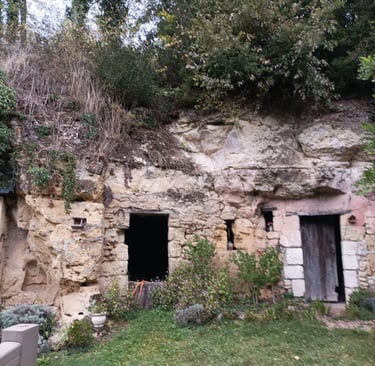


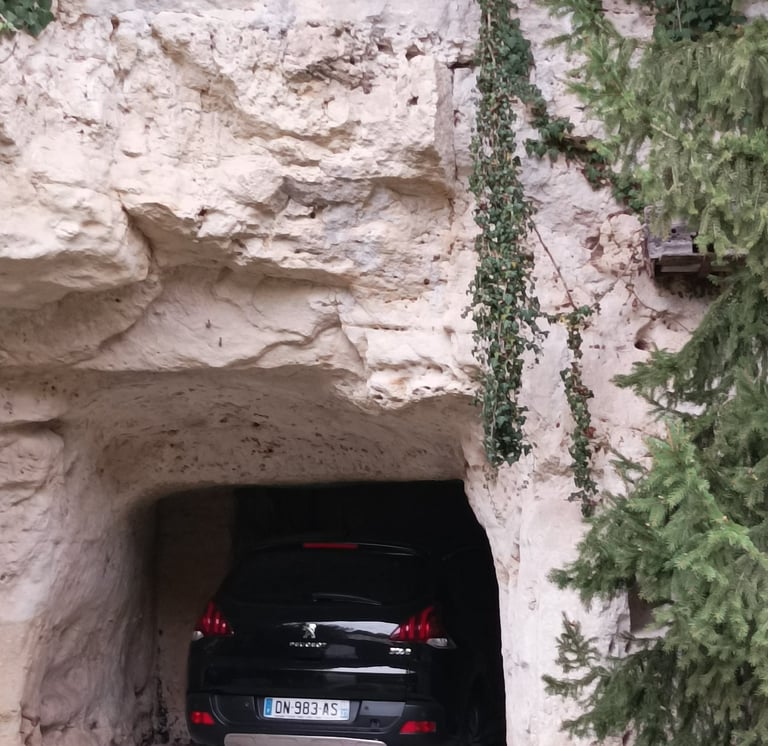


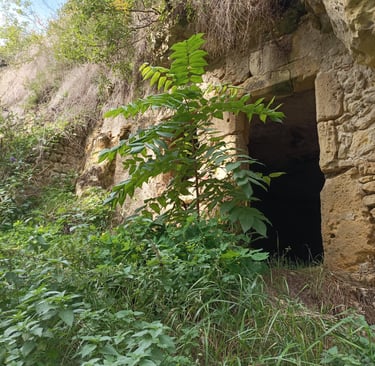
So, where do we stand today? Clearly, in spite of the French Revolution, and the abandonment of feudalism, there are still great disparities in wealth both in France and throughout the world. But France is a secular country now, and feudalism has long been abolished. University education is free and the welfare system is robust. People still complain, as people are wont to do. A French doctor once told me,"ils crachent dans leur soupe." But to me, France seems a much fairer country than most, and I feel very grateful that I can live here. Vive la République!

